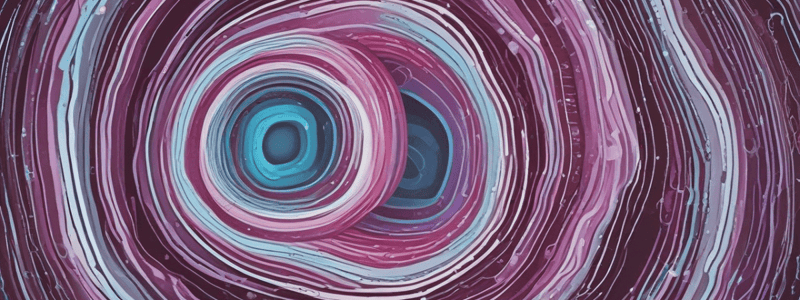Podcast
Questions and Answers
What are the indications for performing micturating cystourethrography (MCUG)?
What are the indications for performing micturating cystourethrography (MCUG)?
- To study the brain
- To demonstrate vesico-ureteric reflux (correct)
- To assess lung function
- To evaluate the kidneys
What is the importance of early filling monitoring during MCUG?
What is the importance of early filling monitoring during MCUG?
To ensure the catheter is not malpositioned, for example in the distal ureter or vagina.
Special aftercare is always required following an MCUG procedure.
Special aftercare is always required following an MCUG procedure.
False (B)
Flashcards are hidden until you start studying
Study Notes
Indications of Micturating Cystourethrography (MCUG)
- Vesicoureteric reflux
- Study of the urethra during micturition
- Bladder leak post surgery or trauma
- Urodynamic studies, e.g. for incontinence
Contraindications
- Acute urinary tract infection
Equipment
- Fluoroscopy unit with spot film device and tilting table
- Video recorder (for urodynamics)
- Bladder catheter
Patient Preparation
- Patient empties their bladder prior to the examination
- Coned view of the bladder is taken as a preliminary image
Technique of MCUG
- Bladder catheterization using aseptic technique
- Contrast medium (150 mg I mL-1) is slowly injected or dripped in with the patient supine
- Bladder filling is observed by intermittent fluoroscopy to identify transient reflux
- Intermittent monitoring is necessary to ensure the catheter is not malpositioned
- Catheter removal is done when the patient can micturate, does not tolerate further infusion, or when no more contrast medium will drip into the bladder
- Spot images are taken during micturition to record any reflux
- A video recording may be useful
- The lower ureter is best seen in the anterior oblique position of that side
- Boys should micturate in an oblique or lateral projection to take spot films of the entire urethra
- A full-length view of the abdomen is taken to demonstrate any undetected reflux of contrast medium into the kidneys and to record the post-micturition residue
- Lateral views are helpful when fistulation into the rectum or vagina are suspected
- Oblique views are needed when evaluating for leaks
- Stress views are used for urodynamic studies
Aftercare
- No special aftercare is necessary
- Patients and parents of children should be warned about dysuria, possibly leading to retention of urine
- Simple analgesics may be helpful, and children may be helped by allowing them to micturate in a warm bath
- Antibiotics may be prescribed for 3 days to prevent urinary tract infection
Complications
- Urinary tract infection
- Catheter trauma may lead to dysuria, frequency, haematuria, and urinary retention
- Complications of bladder filling, e.g. perforation from overdistension
- Catheterization of vagina or an ectopic ureteral orifice
- Retention of a Foley catheter
Studying That Suits You
Use AI to generate personalized quizzes and flashcards to suit your learning preferences.



